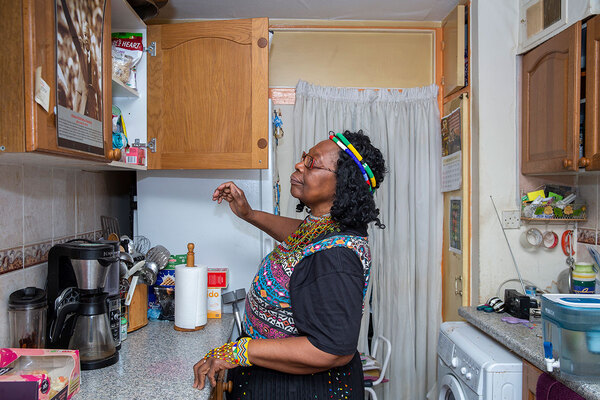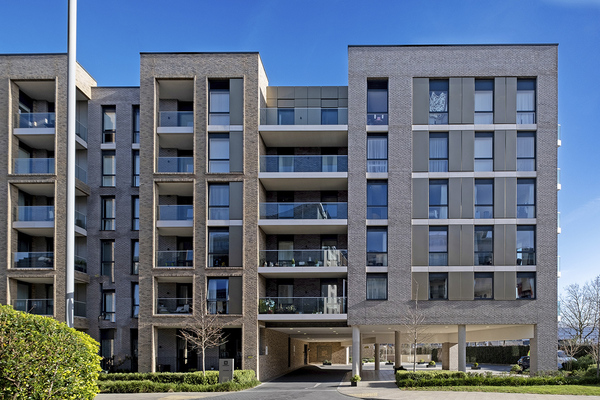You are viewing 1 of your 1 free articles
Labour’s planning policy cannot ignore the ageing population
We need to make sure housing policy is aligned with demographics, writes Nick Sanderson, chief executive and founder of the Audley Group developer of retirement communities
We knew Labour’s intentions from its manifesto, but the past two months has seen housing policy put firmly at the heart of the new government’s plan.
We’ve heard from both Angela Rayner, the housing secretary, and Rachel Reeves, the chancellor, on the planning overhaul to free up grey belt land and put more people on the ground, and the government’s 1.5 million homes in five years target is now etched in our all memories. I can’t imagine that anyone will have forgotten that figure in five years time.
What I haven’t heard enough on yet is the type of properties that will make up the 1.5 million target. More of the same would be a blinkered approach to our housing system, in my view.
Instead, Labour should look at how our market functions as a whole. And with that, the types of houses our property market actually needs.
One of the most severely underserved parts of our housing market is senior living - spanning all tenure types and affordability levels. Over the next decade, the size of the over-65 population will grow at three times the pace of the national average, with 17.4 million over-65s projected to be living in the UK by 2043. That’s a quarter of our population.
It is therefore shocking that senior-living units account for just 3% of new housing completions.
“Aligning housing policy with demographics would give people more choice over where and how they live as they get older, and encourage would-be downsizers into homes that align with their needs”
Only 9,160 such properties were built in 2023. Compare this with the population estimates and the Mayhew Review’s recommendation that 50,000 new senior-living units should be constructed a year and the market is well off the pace.
It’s not a part of the market Labour can afford to ignore. In fact, I would argue that it is more important than increasing the provision of first-time buyer properties. Aligning housing policy with demographics would give people more choice over where and how they live as they get older, and encourage would-be downsizers into homes that align with their needs. This, in turn, would free up family homes for those moving up the ladder.
This thinking hasn’t been at the forefront of policymakers’ minds in recent years, but Labour has a window to implement real change, and do so quickly. The benefits could be far-reaching.
Over the past few years, high-quality integrated retirement communities (IRCs) have taken an increasing share of the senior-living market. The reasons behind this are valid. Such schemes improve the quality of life for those living in them and their families, and in tandem reduce pressures on the NHS and social-care system – both areas of focus for Labour.
As we get older, our homes, and the environments we live in, should enable us to actively improve our health and adapt to our changing needs, rather than having a negative impact on our well-being. This should go hand-in-hand with access to care and support as it is needed. IRCs do this, and do it at scale.
“The new housing minister has to recognise the power of aligning housing policy with demographics, and put plans in place for a diverse offering for those in later life – matching people’s needs, wants and their finances”
IRCs enable people to improve every aspect of their well-being, from their physical health through to their emotional and environmental wellness. This helps people stay independent in their own homes for longer, which reduces pressure on local care services. In 2020, research conducted by the King’s Fund and the University of York found strong evidence of reduced visits to GPs and a reduced reliance on community nursing for those living in housing with care communities.
And if people do need hospital care, living in an IRC enables them to get home faster, because a care package is available immediately. The same research showed a reduction in length of hospital stays, fewer hospital admissions and fewer ambulance and emergency call-outs for those in housing with care settings.
The new housing minister has to recognise the power of aligning housing policy with demographics, and put plans in place for a diverse offering for those in later life – matching people’s needs, wants and their finances.
Mandating the delivery of IRCs in new developments and reforming planning rules to make it easier to build these homes would mark the start of positive change. And it’s what I hope to hear from Labour in the coming weeks.
Nick Sanderson, chief executive and founder, Audley Group
Sign up for our care and support bulletin
Already have an account? Click here to manage your newsletters













